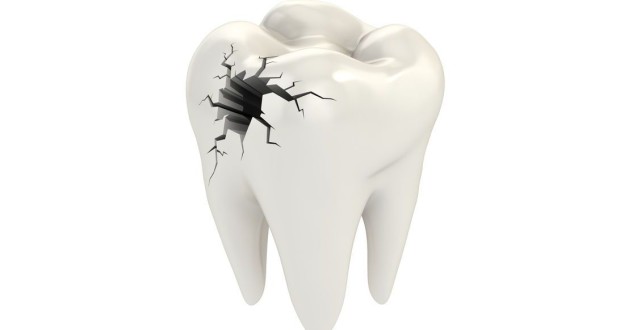Though health officials constantly stress the need for rigorous dental hygiene, many people fail to heed this advice. Consequently, dentists spend many of their working hours filling in their patients’ cavities. Since cavities are so common, a number of myths have sprung up regarding this widespread dental problem.
Food and Plaque
The formation of cavities occurs due to the presence of a sticky, colorless film known as plaque. Plaque forms when sugary/starchy foods interact with mouth bacteria, resulting in the creation of acids. In turn, these acids work to erode the enamel, the outermost protective layer of teeth. If not checked, this food-fueled assault can create holes in the enamel layer, which are usually referred to as cavities.
Though you might assume otherwise, cavities are generally not painful. This can change once a cavity becomes relatively large in size, exposing the tooth’s nerve to outside elements. Alternatively, large holes in the enamel can also lead to tooth fractures.
Did You Know…?
Now that we’ve reviewed the basic facts regarding the formation of cavities, let’s quickly dispel some myths regarding this topic.
Cavities are Only Caused by Sugar: No one claims that sugar is good for your teeth. However, it should be noted that any type of carbohydrate can initiate the food-to-acid conversion process. Seemingly innocuous foods, such as rice, potatoes, bread and vegetables, can all leave a lasting (and negative) imprint on teeth.
Cavities Pose a Much Larger Threat to Children Than Adults: Due to fluoridated drinking water, the prevalence of cavities among children has declined significantly in recent decades. Meanwhile, plenty of adults of struggle with poor dental health; more than a quarter of adults aged 35-49 suffer from untreated decay in their permanent teeth.
Cavities are More Likely To Appear in Gaps: This one isn’t necessarily false; small gaps can entrap bits of food, which can give cavities a prime opportunity to develop. In contrast, removing food from larger gaps represents an easier task.
Tooth Sensitivity Equates to Tooth Decay: While cavities can lead to tooth sensitivity, they are not the only culprit behind this problem. Sensitive teeth can also be caused by teeth grinding, age and wear and tear.
 Natural Knowledge 24/7 Educate yourself with nutrition, health and fitness knowledge.
Natural Knowledge 24/7 Educate yourself with nutrition, health and fitness knowledge.






